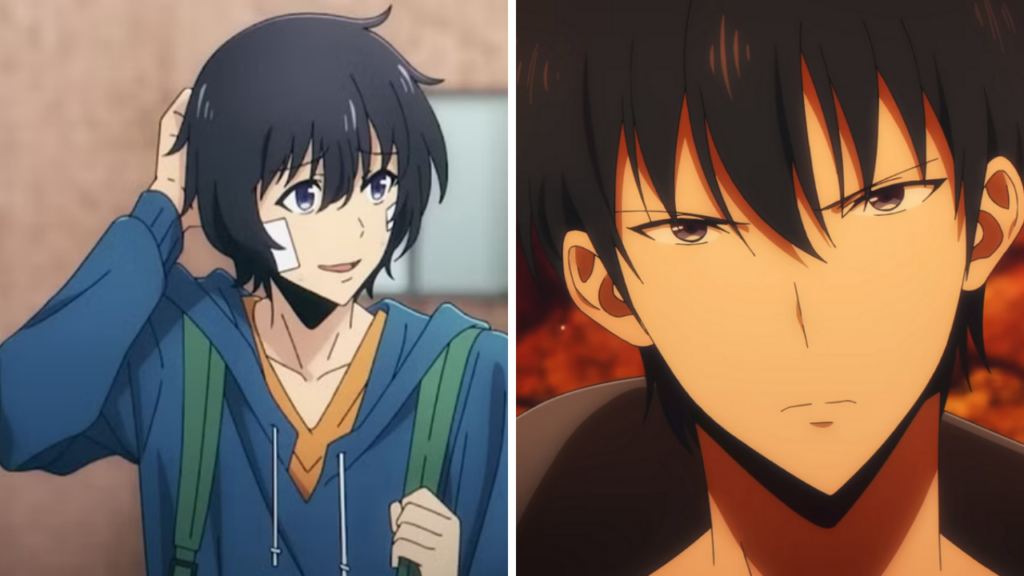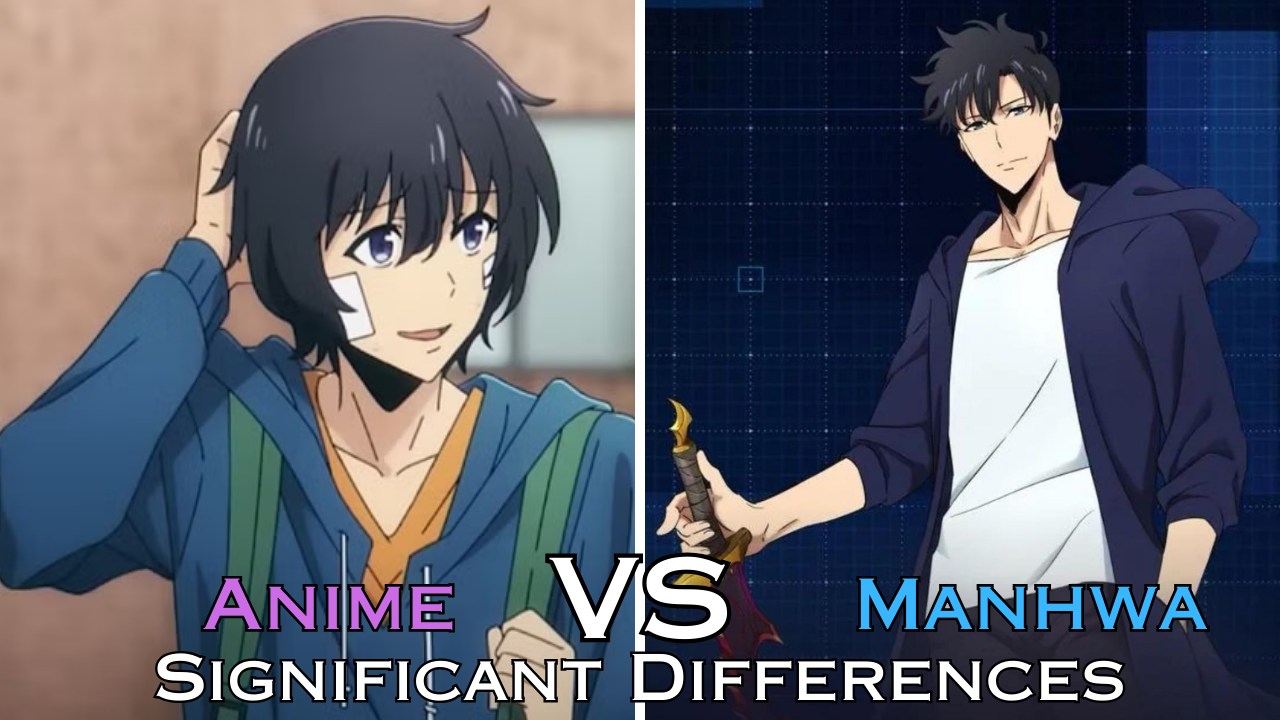Solo Leveling Anime vs Manhwa: Know the Biggest Differences- The “Solo Leveling” series has taken the world by storm, captivating audiences with its thrilling storyline and captivating characters. Originally a “manhwa” (Korean comic), Solo Leveling has recently been adapted into an “anime” series. While both mediums aim to bring this enthralling tale to life, there are significant differences between the two versions. In this article, we’ll delve into the most notable distinctions between the “Solo Leveling anime” and “manhwa”, shedding light on the unique experiences each medium offers.
Table of Contents:
Solo Leveling Anime vs Manhwa: Know the Biggest Differences

Character Portrayals and Development
One of the most striking “differences between the Solo Leveling anime and manhwa” lies in the characterization and development of the protagonists. In the “manhwa”, readers are treated to an in-depth exploration of the character’s motivations, personalities, and growth arcs. The “manhwa” excels at delving into the intricate relationships and inner thoughts of the characters, allowing readers to forge a deeper connection with them.
On the other hand, the “Solo Leveling anime” may face limitations in terms of character depth due to the constraints of a limited number of episodes. While the anime strives to capture the essence of the characters, some of the nuances and subtleties present in the “manhwa” may be condensed or omitted, potentially altering the audience’s perception of certain character arcs.
Pacing and Storytelling

Another significant “difference between the Solo Leveling anime and manhwa” lies in the pacing and storytelling approach. The “manhwa” format allows for a more leisurely and detailed exploration of the narrative, with each chapter building upon the previous one, allowing readers to savor the story’s intricacies.
The “Solo Leveling anime” may need to adopt a more condensed storytelling approach, potentially skipping over or glossing over certain plot points or side stories to fit within the allotted episode count. This could lead to a more fast-paced and action-oriented experience, which may appeal to some viewers but could also leave others feeling that the narrative lacks depth or nuance.
Visual Representation and Artistic Style

The “Solo Leveling anime” and “manhwa” also differ in their visual representation and artistic styles. The “manhwa”, being a static medium, relies heavily on detailed illustrations and panel layouts to convey the story’s events and emotional nuances. The artwork in the “manhwa” is lauded for its intricate details, dynamic action sequences, and expressive character designs.
In comparison, the “Solo Leveling anime” brings the story to life through animation, allowing for fluid movements, dynamic camera angles, and a broader range of visual effects. While the anime may not be able to capture the same level of detail as the “manhwa”, it has the potential to enhance the action sequences and immerse viewers in the world of Solo Leveling through its vibrant visuals and sound design.
Adaptation Choices and Faithfulness to the Source Material

When adapting any “manhwa” or manga into an anime, there are often choices made regarding which elements to include, exclude, or modify. The “Solo Leveling anime” may deviate from the “manhwa” in certain aspects, either due to time constraints, creative decisions, or the need to streamline the narrative for a different medium.
Fans of the “manhwa” may notice omissions, alterations, or additions in the “Solo Leveling anime”, which could potentially impact their enjoyment of the series. It’s essential to approach the anime with an open mind and appreciate it as a distinct interpretation of the original work, rather than expecting a direct, frame-by-frame adaptation.
Also read: 6 Best Anime Like Solo Leveling To Watch, Ranked
Conclusion

While the “Solo Leveling anime” and “manhwa” share the same core narrative, they offer distinct experiences that cater to different preferences and audiences. The “manhwa” provides a more in-depth exploration of characters, detailed storytelling, and intricate artwork, while the “anime” offers a visually dynamic and action-packed interpretation, potentially with a more condensed narrative.
Ultimately, the choice between experiencing the “Solo Leveling anime” or “manhwa” comes down to personal preferences and how one wishes to immerse oneself in this captivating world. Whether you’re a die-hard fan of the “manhwa” or a newcomer to the series, both mediums offer unique perspectives and opportunities to appreciate the brilliance of Solo Leveling’s storytelling. Embrace the differences and let the adventure unfold in whichever medium resonates with you the most.







